Crocheting and quilting – a bounteous habit that buoys the crafter, as well as babies, the homeless, veterans and friends
Becky Gordon made lanyards holding keys and charms in the Girl Scouts. In college, she taught herself to crochet and made necklaces of fine gold thread and beads. After moving to San Francisco in 1975, she became an avid quilter and fabric collector.

“As far back as I can remember I’ve done some sort of craft,” she said. She can make something pretty, personal and useful to give someone pleasure, and go into a meditative state all at once. “When I’m crocheting or quilting, all my worries and concerns go away.”
She gave the lanyards to friends. In college, she sold her necklaces at the St. Augustine flea market for spending money. She still sells a “Scrubadubbie,” a crocheted swatch of fuzzy plastic yarn that can be used as a loofah or to scrub pots and pans.
She calls one of her favorite sewing projects “Pillowcases with Pizzazz,” personalized for family and friends. “There is a coke bottle design fabric for my sister who is a collector; a bicycle for my mountain biker neighbor; Warriors for basketball fans; and cats for my dental hygienist.”In 2010, she taught a class on how to create these pillowcases at the San Francisco QuiltWorks, a charity that continued making them for years, donating them – 6,000 to date – to graduates of the San Francisco foster care system.
And for a nonprofit that distributes clothing to children in Africa, she added straps, armholes and pockets to her pillowcases to make blouses and dresses.
My Brother’s Keeper
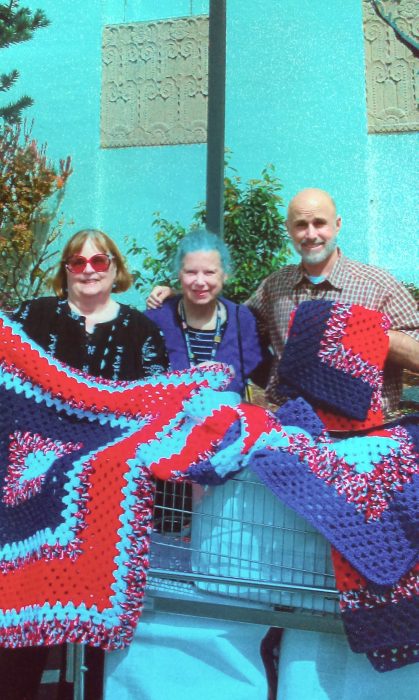
Most of her quilted and crocheted items are given away. The donees have included the homeless, through “My Brother’s Keeper San Francisco,” a group she and four others started; military veterans, through Operation Gratitude; and premature babies at Kaiser Permanente. Baby quilts were her favorite items to make, she said, “because I could make two to four in the same amount of time it would take to make one queen. In this way I could help more people with my work.”
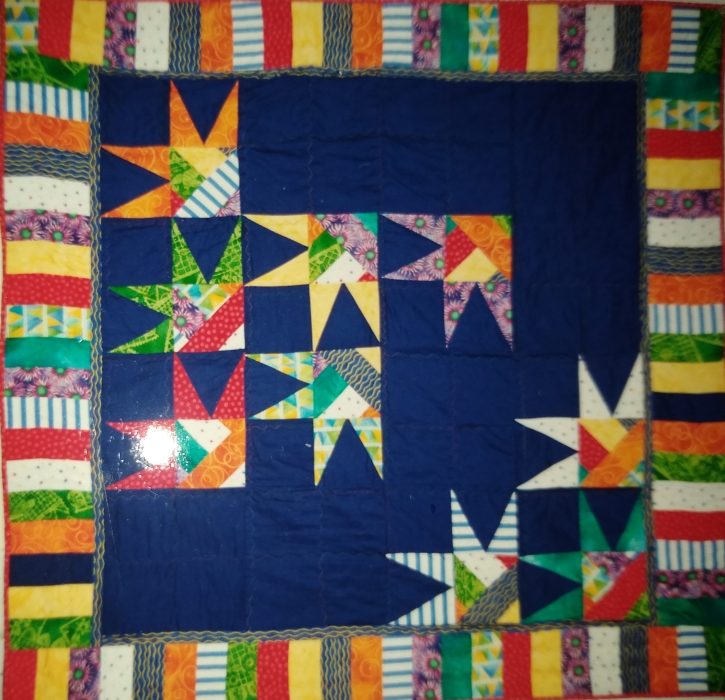
“My Brother’s Keeper” made sleeping bags for the homeless. “We designed a sleeping bag made of recycled goods such as sheets, towels, draperies, bedspreads, even old clothing, made completely by hand,” Gordon said. Volunteers distributed them free to the homeless at night.
In the 1980s, she stumbled upon a space in the Castro district being used by the San Francisco Names Project: People were busy at sewing machines making quilted panels for those who had died of AIDS. “I volunteered, taught people how to sew, and wound up making two panels for friends who died,” she said.
Gordon has supported herself over the years as a secretary, personal assistant and construction manager. For 10 years, she owned an engraving shop. But crafting items for others has been a lifelong pursuit. And crocheting has been her lifeline of late in many ways.
Crocheting during Covid
Now 72, Gordon has been homebound for more than a year – not just by Covid-19 restrictions – but awaiting two knee replacement operations. The first is scheduled for June. She hasn’t been out of her Bernal Heights apartment because she can’t safely navigate the 17 stairs. “So, I crochet. I have 30 baby afghans finished, ready to donate.”

Gordon took up crocheting again – after a 25-year hiatus – at 65, when a back injury prevented her from quilting, She made hats, scarves, wash cloths and doilies for her family and friends. But that wasn’t fulfilling enough. “A little voice told me to start searching for people and places to whom I could donate my handiwork,” she said
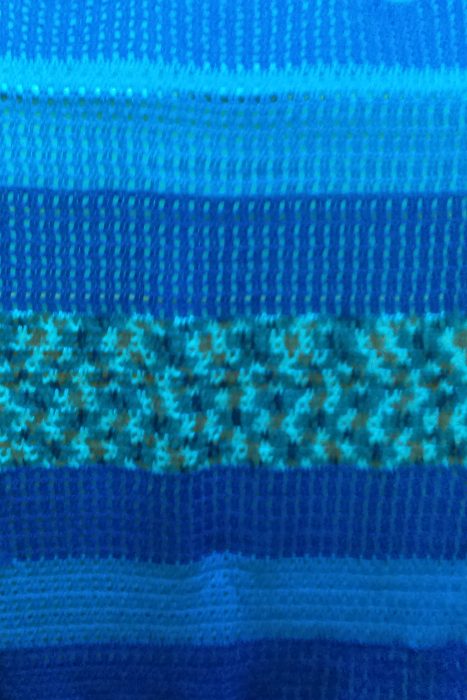
Her first donations were to the military, in honor of her recently-departed brother-in-law, who served in the Coast Guard as a young man. She sent men’s and women’s scarves and hats in three sizes, 40 of each in a box to Operation Gratitude, whose mission is to forge strong bonds between Americans and the military.
“They accepted handmade gifts, you’d be surprised how many charities don’t,” Gordon said.
But due to increased shipping costs, she finally had to stop. By then, she had donated more than 500 hats and scarves over a several year period.
‘Becky’s Blankets:’ ready to go

Gordon’s next project, in 2013, was crocheted afghans. Named for Afghanistan’s distinctive textiles, these crocheted or knitted blankets – sometimes known as a “throw” – come in all sizes. Gordon chose baby size.
“I began making baby afghans for San Francisco’s Homeless Prenatal Program, donating 30 to 40 each time,” she said. She also sent them to the Lucille Packard Children’s Hospital at Stanford and the Kaiser Permanente Preemie Program in San Francisco as well as “high school mothers who attend a two-year nursing and social work supervised educational program, so they can continue with their schooling,” Gordon said.

Gordon also keeps on hand what a friend calls “Becky’s Blankets,” a stock of baby afghans, free for anyone who wants to give a baby gift. “All they need do is reimburse me for postage and gift wrapping,” Gordon said.
Also sitting in Gordon’s apartment waiting distribution are twin-sized afghans in khaki and camouflage for the San Francisco Veterans’ Administration Medical Center. It was a request from the volunteer director, who admired the red, white, and blue lap afghans she donated for their veterans in wheelchairs.
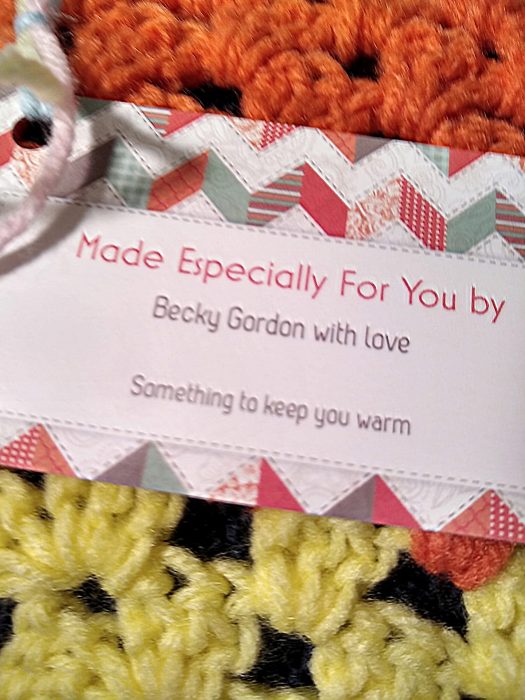
Growing up with quilts
Gordon enjoys crocheting but looks forward to getting back into quilting, which was so much a part of her life until seven years ago when she could no longer use her sewing machine. Quilting, originally used to make clothing, may date back as far as 3400 BCE. It became widespread when large-scale manufacturing in the U.S. made fabrics available to almost every family.
Gordon fell in love with quilting as a child while visiting her Aunt Mabel in a West Virginia farmhouse, where every bed was adorned with a quilt.
Gordon was born in northwestern Ohio, but moved to St. Petersburg, Fla., at four years of age when her father, uncle and grandfather bought a bowling alley there. As a youngster, she mowed lawns and painted houses with her older half-brother. She attended college with the help of academic scholarships and part-time jobs, graduating in 1970 from the University of Florida with a degree in elementary education. She turned to alternative work when a statewide teachers’ strike went into effect.
So many patterns
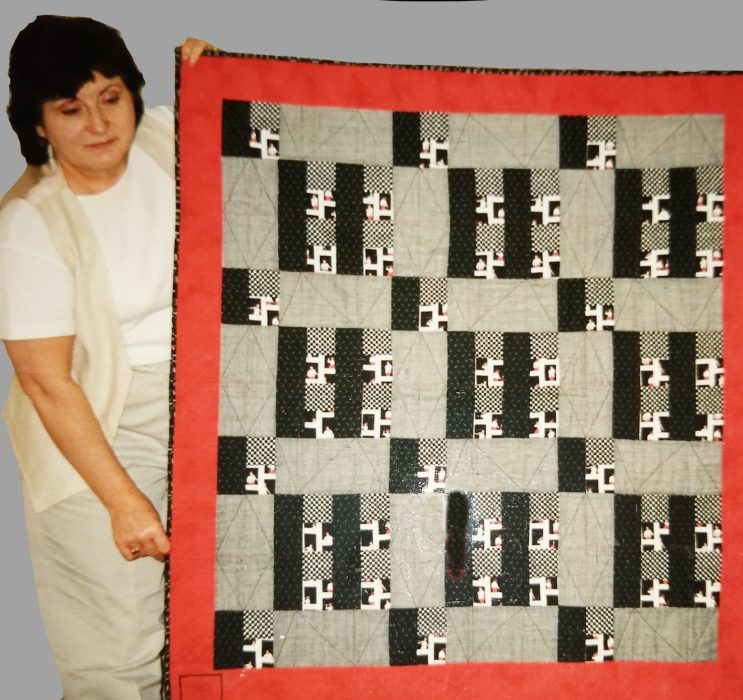
As a quilter, Gordon discovered there are as many styles of quilts as the imagination allows. “I like the sampler quilt with its various patterned blocks,” she said. “I also like the ‘I Spy’ pattern for baby quilts, which sometimes includes 100 different prints in small blocks, giving baby so much to find.”
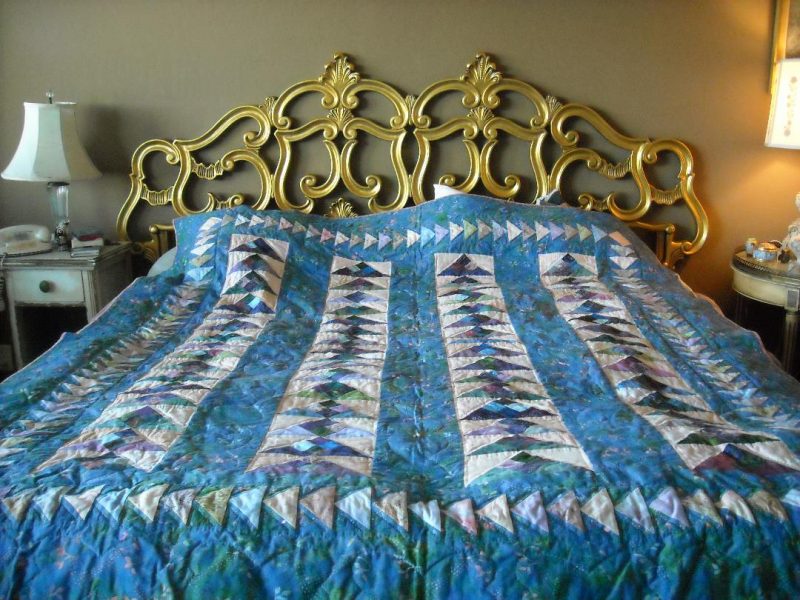
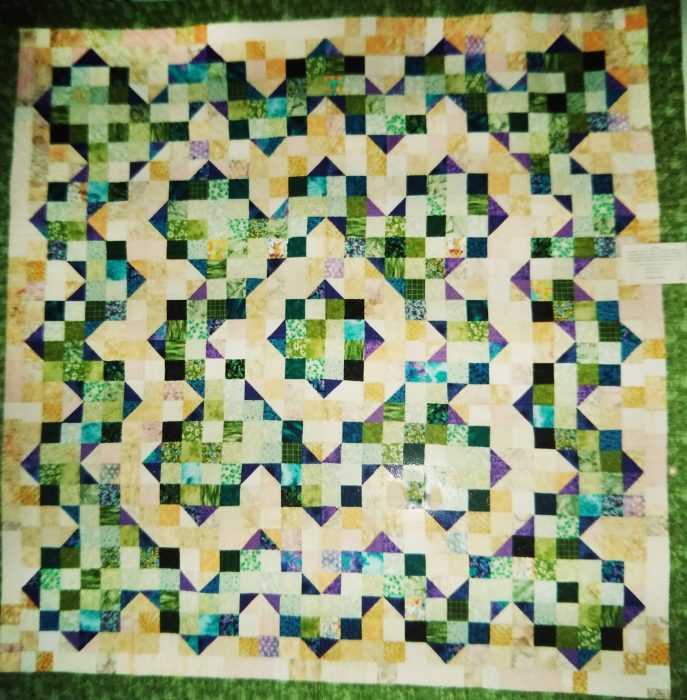
Today, the Craft Industry Alliance estimates that quilting is a $4.2 billion dollar per year industry, with 98 percent of the quilters being women and the majority retired. “I did my quilting and crocheting while holding down full-time jobs,” Gordon said.
From 1994 to 2004, when it disbanded, the San Francisco “My Brother’s Keeper” group made more than 1,000 sleeping bags. “Our goal was not to encourage people to sleep on the street, but to provide at least one night of comfort and protection for these unfortunate individuals.”
‘Keepers’ creates how-to video
Their efforts gained local media attention. “Media helped us create a ‘how-to’ video for interested groups,” she said. “We wrote the script, hired young adult student actor volunteers – we thought people would learn better from them than ‘little old ladies’ – to demonstrate how to make the sleeping bags without sewing machines.”
With a donation from an “angel,” the group made 20,000 videos and sent them for national distribution to the Pennsylvania headquarters of “My Brother’s Keeper, after which the San Francisco group was patterned. Over the following 10 years, more than 100,000 grassroots groups made sleeping bags for the homeless, some using their videos, Gordon said.

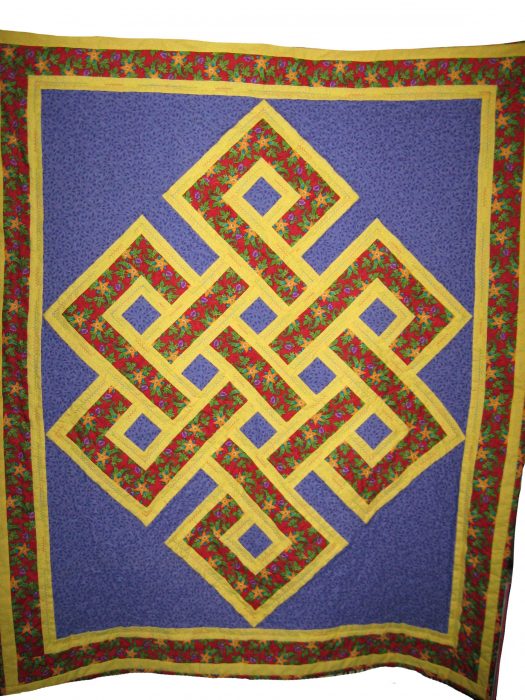
Gordon also participated in a number of “quilt-a-thons” in which members of the San Francisco Quilters Guild would “bring their sewing machines, irons and ironing boards and over an eight-to-12- hour period, would make 30 to 40 quilts they would take home, finish, and bring to the next Guild meeting to be donated to charity,” she said. Laguna Honda Nursing Home was the beneficiary of 100 such blankets, and Gordon donated 25 of her own.
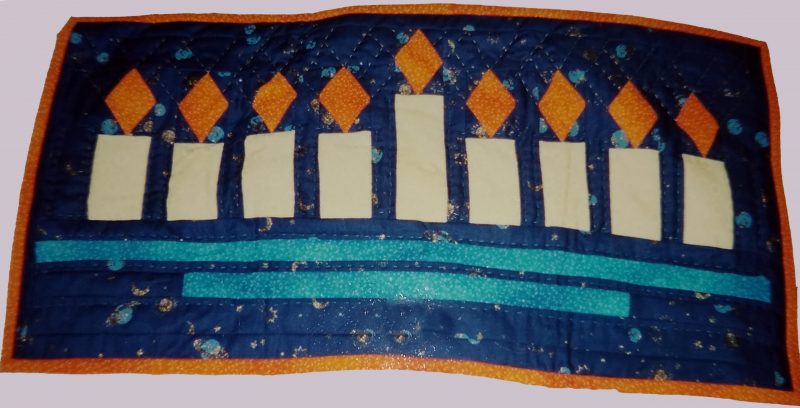
What Gordon misses most about quilting is the camaraderie of the quilting guild and the “quilt-a-thon,” where people gather to make quilts for a charity. “There are even quilting cruises where I’ve made lifelong friends.” Gordon said. “Quilters are a very friendly bunch and generous to a fault.”





